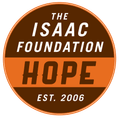


Published:
ALBERTA TODDLER AWAITING FUNDING FOR LIFE-SUSTAINING TREATMENT
St. Albert Toddler Diagnosed With Ultra-Rare Condition; Treatment Already Being Funded In Numerous Provinces
Alberta Health is currently considering an application for exceptional funding of an expensive life-sustaining treatment required by an Alberta toddler. Three year-old Aleena Sadownyk was recently diagnosed with MPS VI, and requires the life-sustaining treatment immediately in order to halt further progression of her devastating disease. Alberta Health has already denied funding for the treatment through the Alberta Rare Diseases Funding Program. They are now reviewing a second application through the Short Term Exceptional Drug Therapy (STEDT) program. While Aleena needs to begin treatment immediately, there has been no timeline set for a decision from Alberta Health.
Aleena suffers from a rare enzyme deficiency called MPS VI (also known as Maroteaux-Lamy Syndrome). Sufferers of MPS VI lack an enzyme in their blood that breaks down cellular waste in the body called glycosaminoglycan (GAG). These GAGs build up in the bones, tissues, organs, and muscles of affected individuals and lead to many devastating symptoms including heart and airway disease, corneal clouding, stiffening of the joints, shortened stature, and premature death. To date, there are 9 children suffering from the disease in Canada and roughly 1,100 worldwide.
While there is no known cure for MPS VI, a treatment does exist. Naglazyme is an Enzyme-Replacement Therapy (ERT) designed to provide patients with a synthetic version of the enzyme they are lacking by infusing small doses into the patient’s bloodstream on a weekly basis. Produced by Biomarin, the treatment for this orphan disease can range from $300,000 per year for a small individual to $1 million per year for a young adult. Due to the lack of an orphan drug policy in Canada, Naglazyme is only available to Canadian patients through the Federal Government’s Special Access Program (SAP). It is being used for patients in Ontario, British Columbia, Saskatchewan, and Quebec through the SAP and is funded by the Provincial governments respectively. Currently, Naglazyme has been approved in numerous countries worldwide, including the United States, the European Union, and Australia.
In Canada, there are numerous precedents for the life-sustaining treatment to be funded. The first approved case took place in Ontario where the parents of 9 year-old Isaac McFadyen, residents of Campbellford, Ontario, successfully lobbied the Government to fund the expensive Enzyme Replacement Therapy for him when he was diagnosed in 2006. After a very public campaign to secure funding, Isaac has been receiving his weekly infusions at The Hospital For Sick Children in Toronto for 7 years. Since then, numerous other provinces have used the precedent set by the McFadyen case and have approved the same treatment for their patients, most recently in 2012 in Saskatchewan and 2011 in Ontario.
Prior to starting treatment, Isaac suffered from severe compression of his spinal cord that required the removal of a piece of his skull and a portion of his vertebrae. In addition, Isaac endured numerous other surgeries to treat complications of the advancing disease in his body. Since beginning his weekly infusions, Isaac’s liver and spleen have reduced back down to a normal size, his rate of growth has increased, his heart function has improved, and his heart valve disease has stabilized. Furthermore, Isaac has had no further progression of his bone and joint disease, airway disease, and compression of his spinal cord.
Naturally, the Sadownyk family has been devastated by the diagnosis of their daughter, Aleena. Laura Sadownyk, Aleena’s mother, expressed her fears about the length of time the government is taking to render its decision. “It’s very agonizing to wait patiently, especially after hearing the experts in this field talk about early diagnosis and treatment being the best way to prevent the onset of a lot of the effects of this disease.”
McFadyen also notes how important it is to get children affected with MPS VI started on weekly infusions at a young age, and is also frustrated by the process put in place to review rare disease funding in the province. “We know that this treatment can slow down or even halt the disease progression in individuals so it’s very important to begin treatment as soon as possible after diagnosis. Aleena has already been approved by the Special Access Program to receive the treatment she so desperately needs. The only thing stopping her from beginning that treatment is the lack of funding by the Province.” Adds Sadownyk, “It’s heartbreaking that the fate of our daughter rests in the hands of bureaucrats.”
McFadyen believes that the time for action from the Redford government is now. “The Provincial government has the opportunity to do the right thing and ensure that Aleena receives the treatment she so desperately needs. It’s the role of government to protect and ensure fair and equitable access to Health Care for all Canadians, regardless of which Province they happen to live it. The Isaac Foundation is calling on this government to take action and save the life of this child. She can’t afford to wait.”
# # #
For more information about this topic, or to schedule an interview to discuss, please call Andrew at 613-328-9136 or email Andrew at mcfadyena@me.com.
Attached Photo - Aleena Sadownyk, Age 3. St. Albert, AB